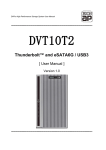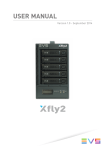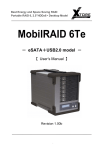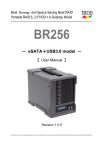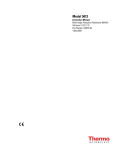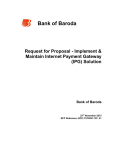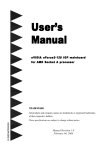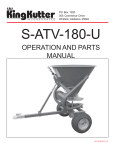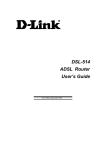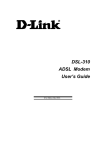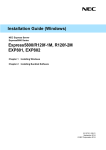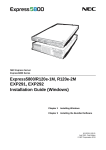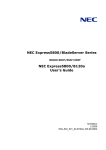Download DVPro High Performance Storage System User Manual
Transcript
DVPro High Performance Storage System User Manual ---------------------------------------------------------------------------- T10B3 - eSATA6G and USB3 HOST MODEL- [ User Manual ] Version 1.0 ---------------------------------------------------------------------------- Safety Warning In order to avoid injury to oneself, please heed the following instructions. ■ The following indications explain the degree of physical danger possible by ignoring the proper usage directions. WARNING This symbol and waning is used to indicate sections that may result in a serious injury or even death. CAUTION This symbol and caution is used to indicate sections that only pose a risk of minor injury or physical damage. M ■ The various types of warning symbols are listed in the following picture. This symbol means that you should pay extra caution. This symbol indicates something you absolutely must not do. This symbol indicates something you must do. BIOS CORPORATION Precautions This user manual contains features, functions, setup, and warnings, so please read this manual prior to use our product. ・ If any material in this manual is not clear, please contact vender whom you purchased from. ・ The information in this manual is subject to change without prior notice. ・ It is prohibited to reproduce any part of this manual in any form or by any means without prior written permission of the manufacturer and the author. ・ Manufacturer assumes no liability or responsibility for any errors that may appear in this manual. In case issue arised please contact us or vender whom you purchased from. ・ All trademarks stated in this manual belong to the properties of their respective owners. - 1 - DVT10B3 ‥‥‥‥‥‥‥‥‥‥‥‥‥‥‥‥‥‥‥‥‥‥‥‥‥‥‥‥‥‥‥‥‥‥‥‥‥‥‥‥‥‥‥‥‥‥‥‥ ‥‥‥‥‥‥‥‥‥‥‥‥‥‥‥‥‥‥‥‥‥‥‥‥‥‥‥‥‥‥‥‥‥‥‥‥‥‥‥‥‥‥‥‥‥‥‥‥ ‥‥‥‥‥‥‥‥‥‥‥‥‥‥‥‥‥‥‥‥‥‥‥‥‥‥‥‥‥‥‥‥‥‥‥‥‥‥‥‥‥‥‥‥‥‥‥‥ ‥‥‥‥‥‥‥‥‥‥‥‥‥‥‥‥‥‥‥‥‥‥‥‥‥‥‥‥‥‥‥‥‥‥‥‥‥‥‥‥‥‥‥‥‥‥‥‥ ‥‥‥‥‥‥‥‥‥‥‥‥‥‥‥‥‥‥‥‥‥‥‥‥‥‥‥‥‥‥‥‥‥‥‥‥‥‥‥‥‥‥‥‥‥‥‥‥ ‥‥‥‥‥‥‥‥‥‥‥‥‥‥‥‥‥‥‥‥‥‥‥‥‥‥‥‥‥‥‥‥‥‥‥‥‥‥‥‥‥‥‥‥‥‥‥‥ ‥‥‥‥‥‥‥‥‥‥‥‥‥‥‥‥‥‥‥‥‥‥‥‥‥‥‥‥‥‥‥‥‥‥‥‥‥‥‥‥‥‥‥‥‥‥‥‥ ‥‥‥‥‥‥‥‥‥‥‥‥‥‥‥‥‥‥‥‥‥‥‥‥‥‥‥‥‥‥‥‥‥‥‥‥‥‥‥‥‥‥‥‥‥‥‥‥ ‥‥‥‥‥‥‥‥‥‥‥‥‥‥‥‥‥‥‥‥‥‥‥‥‥‥‥‥‥‥‥‥‥‥‥‥‥‥‥‥‥‥‥‥‥‥‥‥ ‥‥‥‥‥‥‥‥‥‥‥‥‥‥‥‥‥‥‥‥‥‥‥‥‥‥‥‥‥‥‥‥‥‥‥‥‥‥‥‥‥‥‥‥‥‥‥‥ ‥‥‥‥‥‥‥‥‥‥‥‥‥‥‥‥‥‥‥‥‥‥‥‥‥‥‥‥‥‥‥‥‥‥‥‥‥‥‥‥‥‥‥‥‥‥‥‥ ‥‥‥‥‥‥‥‥‥‥‥‥‥‥‥‥‥‥‥‥‥‥‥‥‥‥‥‥‥‥‥‥‥‥‥‥‥‥‥‥‥‥‥‥‥‥‥‥ ‥‥‥‥‥‥‥‥‥‥‥‥‥‥‥‥‥‥‥‥‥‥‥‥‥‥‥‥‥‥‥‥‥‥‥‥‥‥‥‥‥‥‥‥‥‥‥‥ ‥‥‥‥‥‥‥‥‥‥‥‥‥‥‥‥‥‥‥‥‥‥‥‥‥‥‥‥‥‥‥‥‥‥‥‥‥‥‥‥‥‥‥‥‥‥‥‥ ‥‥‥‥‥‥‥‥‥‥‥‥‥‥‥‥‥‥‥‥‥‥‥‥‥‥‥‥‥‥‥‥‥‥‥‥‥‥‥‥‥‥‥‥‥‥‥‥ ‥‥‥‥‥‥‥‥‥‥‥‥‥‥‥‥‥‥‥‥‥‥‥‥‥‥‥‥‥‥‥‥‥‥‥‥‥‥‥‥‥‥‥‥‥‥‥‥ ‥‥‥‥‥‥‥‥‥‥‥‥‥‥‥‥‥‥‥‥‥‥‥‥‥‥‥‥‥‥‥‥‥‥‥‥‥‥‥‥‥‥‥‥‥‥‥‥ ‥‥‥‥‥‥‥‥‥‥‥‥‥‥‥‥‥‥‥‥‥‥‥‥‥‥‥‥‥‥‥‥‥‥‥‥‥‥‥‥‥‥‥‥‥‥‥‥ ‥‥‥‥‥‥‥‥‥‥‥‥‥‥‥‥‥‥‥‥‥‥‥‥‥‥‥‥‥‥‥‥‥‥‥‥‥‥‥‥‥‥‥‥‥‥‥‥ ‥‥‥‥‥‥‥‥‥‥‥‥‥‥‥‥‥‥‥‥‥‥‥‥‥‥‥‥‥‥‥‥‥‥‥‥‥‥‥‥‥‥‥‥‥‥‥‥ ‥‥‥‥‥‥‥‥‥‥‥‥‥‥‥‥‥‥‥‥‥‥‥‥‥‥‥‥‥‥‥‥‥‥‥‥‥‥‥‥‥‥‥‥‥‥‥‥ ‥‥‥‥‥‥‥‥‥‥‥‥‥‥‥‥‥‥‥‥‥‥‥‥‥‥‥‥‥‥‥‥‥‥‥‥‥‥‥‥‥‥‥‥‥‥‥‥ ‥‥‥‥‥‥‥‥‥‥‥‥‥‥‥‥‥‥‥‥‥‥‥‥‥‥‥‥‥‥‥‥‥‥‥‥‥‥‥‥‥‥‥‥‥‥‥‥ ‥‥‥‥‥‥‥‥‥‥‥‥‥‥‥‥‥‥‥‥‥‥‥‥‥‥‥‥‥‥‥‥‥‥‥‥‥‥‥‥‥‥‥‥‥‥‥‥ ‥‥‥‥‥‥‥‥‥‥‥‥‥‥‥‥‥‥‥‥‥‥‥‥‥‥‥‥‥‥‥‥‥‥‥‥‥‥‥‥‥‥‥‥‥‥‥‥ - 2 - BIOS CORPORATION Table of Contents Precautions .......................................................................................................................... 1 Table of Contents ................................................................................................................ 3 Chapter 1. Outline ............................................................................................................. 4 Features ......................................................................................................................................................... 4 Functions ........................................................................................................................................................ 4 Packing Contents ........................................................................................................................................... 5 Hardware Components .................................................................................................................................. 5 Connection ..................................................................................................................................................... 8 Chapter 2. 2.1 2.2 2.3 2.4 2.5 2.6 2.7 2.8 Setup and Monitor ......................................................................................... 10 Setup Overview ................................................................................................................................ 10 LCD Toggle rolling setup flowchart ................................................................................................... 10 Introduction of Parameters Setup ..................................................................................................... 11 RAID Operational Parameters ......................................................................................................... 12 Product Information and Background Parameters ........................................................................... 18 2.5.1 Method to setup background parameters .............................................................................. 18 2.5.2 Parameter Confirmation ......................................................................................................... 24 Web-based Monitor and Setup via Ethernet .................................................................................... 27 2.6.1 Main Screen of Web GUI ....................................................................................................... 28 2.6.2 Introduction of Monitor Mode.................................................................................................. 29 2.6.3 Management Mode Login....................................................................................................... 32 2.6.4 Setup of email notification ...................................................................................................... 34 2.6.5 Mail Format............................................................................................................................. 35 2.6.6 Conditions of Mail Notification ................................................................................................ 36 2.6.7 SNMP Setup ........................................................................................................................... 36 2.6.8 Additional Parameters Setup.................................................................................................. 38 Setup Mode (Array Parameters Setting) .......................................................................................... 39 Host LAN Configuration ................................................................................................................... 44 2.8.1 IP Setup for Windows ............................................................................................................. 44 2.8.2 IP Setup for Linux ................................................................................................................... 46 2.8.3 IP Setup for MAC OS X .......................................................................................................... 47 Chapter 3 Format ............................................................................................................... 50 3.1 3.2 3.3 Linux ................................................................................................................................................. 50 Windows 7 ........................................................................................................................................ 52 Other OSs ........................................................................................................................................ 57 Appexdix A - MBR of different Operating Systems ............................................................ 58 Appexdix B – Error Message shown on LCD ..................................................................... 59 - 3 - DVT10B3 Chapter 1. Outline Features ● Support up to 10 Hot-swap SATA HDD (Hard Disk Drive) ● Support different RAID modes including RAID 6, RAID 5, RAID 3, RAID 1, RAID 0, RAID10 ● Dual Host Interface: eSATA3 (6Gbps) and USB 3.0 (5Gbps) ● Original FPGA RAID 6 Engine with real time parity generation and high speed DMA switching ● Spot error recovery greatly reduces HDD error and rebuild probability ● Automatic Rebuild at adjustable Rebuild Rate ● Maintain same performance upon drive failure and little impact at recovery(RAID 3, 5, 6) ● LCD and keypad operation for status monitoring and system configuration ● Web GUI status monitoring and system configuration Functions ● Two independent or single LUN support for eSATA and USB ● Configurable Write Cache Mode ● Configurable Verify Mode ● Data Read Ahead Size ● Write Retry Mode ● Buffer Segment Size Adjustment ● Starting time of Retry ● Sequential List Size ● Time out Interval for Low Speed Drive Detection ● Power On Standby time ● Drive Ready Waiting Time ● Cache Memory Check Interval ● HDD Patrol Time and Mode <Auxiliary Functions> ● Performance (Data Transfer Speed) Display on LCD ● Event display on LCD ●Email Notification Support ● Web-based Status Monitor ● SNMP notification - 4 - BIOS CORPORATION Packing Contents DVT10B3: Storage sytesm AC Power Cord USB3 Cable: 1 meter USB-IF certified eSATA Cable: 1 meter eSATA cable Screws: 50 pcs of screws and Quick Installation Guide CD : User manual (this file) Hardware Components < Front View> ⑧ ③ ① ② - 5 - ④ ⑤ ⑥ ⑦ DVT10B3 ⑨ < Rear View > ⑪ ⑩ ⑫ < Side View > ⑭ ⑮ ⑬ - 6 - BIOS CORPORATION No. Name Function Explanation ① POWER Switch ② HDD Access / FAIL LED ③ POWER LED Power ON LED indicator ④ ACCESS LED Host Access LED indicator ⑤ FAIL LED Power ON /OFF Switch BLUE Flash upon access; Orange ON indicates an error When「RAID-x RECOVERING 0%」shown on LCD, the FAIL LED on means the HDD is under rebuilding A controller error LED indicator 1)Parameter Initialization(Power on Initialization) 2)Configure parameters 「See Chapter 2」 3)Stop buzzer alarm(Buzzer stopped immediately by pushing one time) ⑥ MODE Button ⑦ SELECT Button ⑧ LCD Display Message display screen. Show status of the system Show parameters while doing configuration ⑨ Power Input AC Inlet ⑩ eSATA3 Connector eSATA host connector ⑪ USB3 Connector USB3 host connector ⑫ Ethernet Port ⑬ Fan Module Fan 1 ⑭ Fan Module Fan 2 ⑮ Drive Module Setup Parameter RJ45 Fast Ethernet port for Web GUI management Disk Drive module 0 (to 9).Upper left one is number 0, and right is 1 ● Both eSATA and USB3 cannot be applied to same LUN at the same time. For simulateneous usage of eSATA and USB3, two LUN mapping and SWAP mode should be configured. - 7 - DVT10B3 Connection < Steps for eSATA connection> 1. Basic connection eSATA or USB 3→ Host Computer ① Connect eSATA Cable or USB3 cable from host to the system. (included in the package) ② To use web-based GUI, connect Ethernet cable between LAN connector and host 2. Dual Connection Connect both eSATA and USB3 cables from host to the system ① Configure LUN size as any kind of two LUNs and LUN mode as “LUN Swapped…” First LUN will be mapped to eSATA and second LUN to USB3. For example, users can create LUN Size as ( 64GB+ALL ). A 64GB LUN will be mapped to eSATA and the rest of capacity will be mapped to USB3 host. ② To use web-based GUI, connect Ethernet cable between LAN connector and host - 8 - BIOS CORPORATION ‥‥‥‥‥‥‥‥‥‥‥‥‥‥‥‥‥‥‥‥‥‥‥‥‥‥‥‥‥‥‥‥‥‥‥‥‥‥‥‥‥‥‥‥‥‥‥‥ ‥‥‥‥‥‥‥‥‥‥‥‥‥‥‥‥‥‥‥‥‥‥‥‥‥‥‥‥‥‥‥‥‥‥‥‥‥‥‥‥‥‥‥‥‥‥‥‥ ‥‥‥‥‥‥‥‥‥‥‥‥‥‥‥‥‥‥‥‥‥‥‥‥‥‥‥‥‥‥‥‥‥‥‥‥‥‥‥‥‥‥‥‥‥‥‥‥ ‥‥‥‥‥‥‥‥‥‥‥‥‥‥‥‥‥‥‥‥‥‥‥‥‥‥‥‥‥‥‥‥‥‥‥‥‥‥‥‥‥‥‥‥‥‥‥‥ ‥‥‥‥‥‥‥‥‥‥‥‥‥‥‥‥‥‥‥‥‥‥‥‥‥‥‥‥‥‥‥‥‥‥‥‥‥‥‥‥‥‥‥‥‥‥‥‥ ‥‥‥‥‥‥‥‥‥‥‥‥‥‥‥‥‥‥‥‥‥‥‥‥‥‥‥‥‥‥‥‥‥‥‥‥‥‥‥‥‥‥‥‥‥‥‥‥ ‥‥‥‥‥‥‥‥‥‥‥‥‥‥‥‥‥‥‥‥‥‥‥‥‥‥‥‥‥‥‥‥‥‥‥‥‥‥‥‥‥‥‥‥‥‥‥‥ ‥‥‥‥‥‥‥‥‥‥‥‥‥‥‥‥‥‥‥‥‥‥‥‥‥‥‥‥‥‥‥‥‥‥‥‥‥‥‥‥‥‥‥‥‥‥‥‥ ‥‥‥‥‥‥‥‥‥‥‥‥‥‥‥‥‥‥‥‥‥‥‥‥‥‥‥‥‥‥‥‥‥‥‥‥‥‥‥‥‥‥‥‥‥‥‥‥ ‥‥‥‥‥‥‥‥‥‥‥‥‥‥‥‥‥‥‥‥‥‥‥‥‥‥‥‥‥‥‥‥‥‥‥‥‥‥‥‥‥‥‥‥‥‥‥‥ ‥‥‥‥‥‥‥‥‥‥‥‥‥‥‥‥‥‥‥‥‥‥‥‥‥‥‥‥‥‥‥‥‥‥‥‥‥‥‥‥‥‥‥‥‥‥‥‥ ‥‥‥‥‥‥‥‥‥‥‥‥‥‥‥‥‥‥‥‥‥‥‥‥‥‥‥‥‥‥‥‥‥‥‥‥‥‥‥‥‥‥‥‥‥‥‥‥ ‥‥‥‥‥‥‥‥‥‥‥‥‥‥‥‥‥‥‥‥‥‥‥‥‥‥‥‥‥‥‥‥‥‥‥‥‥‥‥‥‥‥‥‥‥‥‥‥ ‥‥‥‥‥‥‥‥‥‥‥‥‥‥‥‥‥‥‥‥‥‥‥‥‥‥‥‥‥‥‥‥‥‥‥‥‥‥‥‥‥‥‥‥‥‥‥‥ ‥‥‥‥‥‥‥‥‥‥‥‥‥‥‥‥‥‥‥‥‥‥‥‥‥‥‥‥‥‥‥‥‥‥‥‥‥‥‥‥‥‥‥‥‥‥‥‥ ‥‥‥‥‥‥‥‥‥‥‥‥‥‥‥‥‥‥‥‥‥‥‥‥‥‥‥‥‥‥‥‥‥‥‥‥‥‥‥‥‥‥‥‥‥‥‥‥ ‥‥‥‥‥‥‥‥‥‥‥‥‥‥‥‥‥‥‥‥‥‥‥‥‥‥‥‥‥‥‥‥‥‥‥‥‥‥‥‥‥‥‥‥‥‥‥‥ ‥‥‥‥‥‥‥‥‥‥‥‥‥‥‥‥‥‥‥‥‥‥‥‥‥‥‥‥‥‥‥‥‥‥‥‥‥‥‥‥‥‥‥‥‥‥‥‥ ‥‥‥‥‥‥‥‥‥‥‥‥‥‥‥‥‥‥‥‥‥‥‥‥‥‥‥‥‥‥‥‥‥‥‥‥‥‥‥‥‥‥‥‥‥‥‥‥ ‥‥‥‥‥‥‥‥‥‥‥‥‥‥‥‥‥‥‥‥‥‥‥‥‥‥‥‥‥‥‥‥‥‥‥‥‥‥‥‥‥‥‥‥‥‥‥‥ ‥‥‥‥‥‥‥‥‥‥‥‥‥‥‥‥‥‥‥‥‥‥‥‥‥‥‥‥‥‥‥‥‥‥‥‥‥‥‥‥‥‥‥‥‥‥‥‥ ‥‥‥‥‥‥‥‥‥‥‥‥‥‥‥‥‥‥‥‥‥‥‥‥‥‥‥‥‥‥‥‥‥‥‥‥‥‥‥‥‥‥‥‥‥‥‥‥ ‥‥‥‥‥‥‥‥‥‥‥‥‥‥‥‥‥‥‥‥‥‥‥‥‥‥‥‥‥‥‥‥‥‥‥‥‥‥‥‥‥‥‥‥‥‥‥‥ ‥‥‥‥‥‥‥‥‥‥‥‥‥‥‥‥‥‥‥‥‥‥‥‥‥‥‥‥‥‥‥‥‥‥‥‥‥‥‥‥‥‥‥‥‥‥‥‥ ‥‥‥‥‥‥‥‥‥‥‥‥‥‥‥‥‥‥‥‥‥‥‥‥‥‥‥‥‥‥‥‥‥‥‥‥‥‥‥‥‥‥‥‥‥‥‥‥ - 9 - DVT10B3 Chapter 2. Setup and Monitor 2.1 Setup Overview To simplify the process of setup, DVPro is designed to support all of setup options from front panel LCD and button operation. The default RAID level is RAID6 for highest reliability. To prevent malfunction, parametners cannot be changed at normal operation mode. Critical parameters include number of drive, capacity, and RAID mode should be set up before you started to work with the unit. Default parameter if any is followed with “*” sign 2.2 LCD Toggle rolling setup flowchart ARRAY PARAMETERS SETTING! : Initial Display ↓ Disk Size Setup : Hard Disk Capacity Setup ↓ RAID MODE Setup : RAID Mode Setup ↓ Drive Mode : Number of Drive Setup ↓ SECTOR SIZE Setup : SECTOR size setup ↓ LUN SIZE Setup : LUN size setup ↓ LUN MODE Setup Most of cases, users do not need to change the default setting. Please make sure you understand the function before making any change. : LUN mode setup ↓ Parity STRIPE Size : STRIPE size setup ↓ SATA/USB HOST Setup : SATA/USB host Enable/Disable ↓ Recovery Rate Setup : Recovery/Rebuild rate setup ↓ Cache Size Setup ↓ - 10 - :Cache size setup BIOS CORPORATION Write Pending Setup : Write delay time setup ↓ Write Verify Setup : Write verify setup ↓ Read Ahead Setup : Read ahead size setup 2.3 Introduction of Parameters Setup This section will explain the general parameters setup process. To start with new configuration, the system has to enter Parameter Setup mode. Please press and hold both “Mode” and “Select” buttons for more than 3 seconds while turning on power. The LCD should show message as below indicating the system in Parameter Setup mode. ARRAY PARAMETERS SETTING! You can then start to modify each parameter under this mode. General usage of Buttons: MODE Button: To rotate among Parameter items SELECT Button: Select the parameter for change ●Enter Parameters Setting mode :MODE Button + SELECT Button + Power On ●Rotate among Setup items :MODE Button ●Setup parameters :SELECT Button By pressing MODE and SELECT button at the same time after modification, the selected parameters will be written to internal non-volatile memory then the change will be effective at next power on. When you successfully change the parameter, you will see POWER DOWN PLEASE! Shutdown and power on or press SELECT button for 3 seconds. If you power down before saving to memory the settings will be reverted to the way they were upon the last save. ● Saving the change :① MODE + SELECT Button (Save) ② Shutdown and power on or Press SELECTButton 3 sec ● Cancel the change :Power off while doing change - 11 - DVT10B3 After a new configuration completed, hold down the Mode button at next power on at the same time for system initialization. (Notice: this will initialize controller based on configured parameters. This action will force failed drive or rebuilding status to become “Normal”. Please DO NOT do this if your system was in degraded mode, and need to be recovered.) After power on, LCD should show its RAID mode and “Normal” status. RAID-6 NORMAL 2.4 RAID Operational Parameters This section explains each RAID parameter and the associated function of DVPro system. Ps. Please take a memo if you changed parameters different from its default value. You can follow the method described on「Parameter Confirmation」section to read its value. Disk Size Setup DISK Size xxB This is to specify the capacity of the drive you want to use. The size will be applied to all drives. (Usually the system was configured with exact drive size of inserted disks. You should not change the drive size unless you want to reconfigure and change it.) Parameter Test 1GB Function Memo Set DISK Size as 1GB (Test only) 120GB, 160GB, 250GB, 400GB, 500GB, 750GB, Set Disk Size as 1TB, 2TB, 3TB, 4TB CAUTION M ● Please do not change the default setting If actual drive size was smaller than setup value, error such as「ONE DOWN L」,「SYSTEM DOWN L」might happen and buzzer will be fired. RAID Mode Setup RAID MODE RAID-6 RAID mode selection, supported RAID MODE are - 12 - BIOS CORPORATION RAID 6, RAID 5, RAID 3, RAID 1, RAID 0, RAID 1 Three Drive, RAID 10, Single Drive RAID 1 Three Drive means same data is written to three drives and read might be from any drive. RAID10 works as a pair of ‘Drive 0,1’ ‘Drive 2,3’, ‘Drive 4,5’ etc. Drive Mode Setup DRIVE MODE 6 Setup number of drives in used Parameter Function DRIVE MODE 3 3 Disks(DATA+PARITY)Mode DRIVE MODE 4 4 Disks(DATA+PARITY)Mode DRIVE MODE 5 DRIVE MODE 6 DRIVE MODE 7 DRIVE MODE 8 DRIVE MODE 9 DRIVE MODE 10 5 Disks(DATA+PARITY)Mode 6 Disks(DATA+PARITY)Mode Below is for 10 drive model Memo Default Sector Size Setup SECTOR SIZE 512B 512B, 4KB This is to setup sector size of disk. For new Advanced Format HDD, you need to set up 4KB for better performance on sequential Write access. Please check with your drive vendor for the sector size. LUN Size Setup LUN SIZE Max 2TB Parameter Function Memo LUN SIZE FULL Configure all capacities to Single LUN size. Depend on host operating system, LUN over 2TB size might not be recognized. LUN SIZE MAX 2TB One LUN only and size is set to 2TB as some Operating systems only support less than 2TB LUN size LUN SIZE 1/2 DIVISION Two LUNs each with half of total capacities will be assigned LUN SIZE 64GB + ALL Set up one LUN as 64GB and the rest of all as 2 LUN maximum is 2TB.) - 13 - nd nd LUN (or 2 DVT10B3 64GB + Max2TB LUN SIZE 256GB+ALL 1TB+ALL Set up one LUN as 256GB, 1TB or 2TB and the rest of all nd capacities as 2 LUN 2TB+ALL Note: For LUN mapping to host port, please refer to LUN MODE parameter for details. LUN MODE Setup LUN DIRECT No BIAS Parameter Function LUN DIRECT No BIAS LUN SWAPPED No BIAS LUN DIRECT for MBR(-1) LUN Direct :Both eSATA and USB3 host will be mapped to first LUN nd LUN SWAPPED: First host will be mapped to eSATA and 2 LUN will be mapped to USB3. LUN SWAPPED for MBR(-1) LUN DIRECT for MBR(+1) LUN SWAPPED Memo Default ※Please refer to below explanation ※Please refer to below explanation ※Please refer to below explanation ※Please refer to below explanation for MBR(+1) ※Sector management of RAID are different between [NO BIAS] and [for MBR(-1) or (+1)] Depend on host OS used, the beginng sector address of disk partition is different. And the setting might affect the performance. The setting should not be changed during operation and disk Format is necessary if changed. Please refer to MBR related information in Appendix A. Parity Stripe Width Setup PARITY STRIPE 2 MB/DRIVE Choose stripe width of RAID-5/6 LUN Parameter PARITY STRIPE 2 MB/DRIVE 1MB/DRIVE 256KB/DRIVE 128KB/DRIVE Function Memo Setup stripe width of each drive channel. When the host issues a command, and the parity is to be Default written, the command is divided up into two or more 2 MB/DRIVE operations.A relatively big stripe width is setup to reduce the overhead of continuous operation. - 14 - BIOS CORPORATION The bigger size of stripe width, faster transfer speed can be achieved for sequential read or write. Usually 「2MB/ DRIVE」 setup will give a good performance but it depends on the host application. Setup of eSATA Host eSATA3 Host Enabled Parameter Function eSATA3 Host Enabled eSATA3 Host Disabled Enable eSATA Host Channel Memo Default Disable eSATA Host Channel Setup of USB3 Host USB3 Host Disabled Parameter Function USB3 Host Enabled USB3 Host Disabled Memo Enable USB3 Host Channel Disable USB3 Host Channel Default ※When both eSATA3 and USB3 hosts are enabled, make sure LUN MODE set to “Swapped” Recovery Rate Setup RECOVER RATE 5Min. /GB Recovery (Rebuild) operations utilize free time between host data access without interrupting the current host application. Therefore data read/write priority can be adjusted through different recovery rate setting. User can choose the timing to execute recovery operations as below. Parameter Function RECOVER WAIT TIME 0 Sec Recovery request will be processed immediately between host commands. Recovery will always be processed therefore host access will be slow down. Select this mode if you want the recovery have high priority. - 15 - Memo DVT10B3 Continuous host commands will be processed first. Recovery RECOVER operation will be taken care when the interval between host WAIT commands longer than 0.1 sec. The following host command has TIME 0.1 Sec to wait till one recovery task completed except READ/WRITE or READ Cache command which will be executed immediately. This can be used when host access are not concentrated. RECOVER The wait interval following the last host command is 1 sec. On this WAIT mode, the recovery operation will not be processed if the host TIME 1 Sec commands are continuous with less than 1 sec internal. RECOVER Usually this should not be used. WAIT Probably this mode can be applied if there is very little host TIME 10 Sec access. RECOVER RATE 2Min./GB 5Min./GB 10Min./GB 20Min./GB This is to assign the recovery time for 1GB capacity despite of interval to wait between host commands. There is possibility 1GB recovery cannot be completed within assigned interval. Default 5Min./GB Cache Size Setup CACHE SIZE 512MB This parameter is only for DEBUG usage. Users should NOT alter this setting. Parameter CACHE SIZE 64MB 128MB 256MB 512MB Function Memo 「Cache Buffer Error」will be shown if the selected cache size not matched the installed cache memory Default 512MB Write Cache Mode setup WRITE ALL PENDING 0.1Sec The controller needs more time than writing to single drive to generate parity while doing RAID-3/5/6 WRITE. Therefore Write Cache is enabled in such situation. This parameter defines the timing of flushing cache contents into disks. Parameter Function Memo Under this setting, the Write operation will not be acknowledged Write as “Completed” till data is written into disks. This means no Through WRITE MODE caching is used during data write. The performance is slower WAITING compared to 「WRITE MODE PENDING」mode. READ speed is not affected. - 16 - BIOS CORPORATION Write command is acknowledged as “Completed” right after data Write Back WRITE MODE written into cache, and cached data starts to be moved into disks BUFFERD at the same time. After caching the first host WRITE, the cache content will only be WRITE MODE flushed into disk if there is more than 0.1 sec host idle or cache PENDING threshold is met. When doing sequential writes, cache will be Default 0.1Sec filled by multiple write command and data can be written once to save total write time. WRITE MODE PENDING Similar to PENDING 0.1 sec, the wait interval is one second. 1 Sec Verify Mode Setup VERIFY WAIT READ aft WRITE Verify Mode allows you to setup the action for ATA WRITE VERIFY command. “No Verify” will take ‘WRITE VERIFY’ command as a simple ‘WRITE’ without waiting verification to be completed. Upon READ request after a WRITE command, “NO READ aft WRITE”, means to use cached content to respond a READ command after WRITE. “READ aft WRITE” means cache data was disgarded and controller has to read data from disk Parameter Function The Write Verify command cannot be completed at the time data VERIFY written into cache. It has to wait till Verification completed. And WAITRead aft the written data in cache will be discarded. The data will be read Write from the disk when a read request comes in. Memo Default The Write Verify command cannot be completed at the time data written into cache. It has to wait till Verification completed. And use the written data in cache for following READ command usage. Write Verify command is treated as Write without verification. And NO VERIFY the written data in cache will be discarded. The data will be read Read aft Write from the disk when a read request comes in. NO VERIFY Write Verify command is treated as Write without verification. And NO READ aft use the written data in cache for following READ command WRITE usage. VERIFY NO READ aft WRT Read Ahead Setup READ AHEAD 64 KB This is to set size of data to prefetch into cache for read operation. Parameter Function READ AHEAD Do not do read ahead. 0 KB You might like to use this setting if read data is frequenty changed - 17 - Memo DVT10B3 READ AHEAD 8 KB READ AHEAD 64 KB READ AHEAD 256 KB READ AHEAD 1 MB READ AHEAD 4 MB across different directories The read ahead size is 8KB, i.e one page same as buffer segment size.This might be effective for general random operation. This will read ahead multiple pages following the current one.シー This is effective for general sequential read. Compared to 64KB, one more page or 256KB will be prefetched depend on page size. This is effective for sequentical access especially video data. 1MB or multiple page read ahead depend on page size. It will be effective if the data size is times of MBs. 4MB size read ahead. This might be effective if the application read directly block data without through file system. Default 2.5 Product Information and Background Parameters IP address of GUI, Fan speed control and other details for the system are called Background parameters on the contrast to RAID operational parameters described in section 2.4 You can change these parameters as described below from LCD operation panel. Web UI is usually recommended for such requirement if accessible. ps)Please take a memo before you apply to change the default setting. Default setting is always recommended unless there is special requirement for the change. 2.5.1 Method to setup background parameters Please make sure you understand exactly the purpose that you are changing from the default parameters. Product information will be shown first while you go through background parameter setting. 1.Holding both the Mode and Select switch, power up to enter Parameter Setting mode. ARRAY PARAMETERS SETTING! 2.Press the SELECT button (instead of MODE to set up RAID operational parameters) Firm ware is Ver.x.xxx Firmware version will be displayed Vender ID is BIOS Vendor ID will be displayed Product ID is DVT10B3 Product ID will be displayed 3.Press the SELECTbutton 4.Press the SELECTbutton - 18 - BIOS CORPORATION 5.Press the SELECTbutton Serial No ID xxxxxxxx Serial number of DVPro T10 will be displayed 6.Press the SELECTbutton End of Fixed Parameter Indicate the end of the fixed parameters. Then, if you press the Mode button now, you will enter Background Parameter mode. You can also get into Background Mode by pressing the Mode button during display on Firmware Version, Vednor ID, Device ID, or Serial Number. From here, pressing the Mode button to roll among the background parameters. ● IP Address Setup IP Address 192.168.50.210 By pushing SELECTbutton, the IP Address will be increased. The longer you hold the SELECT button, the faster the number is increased. Push the MODE button to move to next field. ● Address Mask Setup Address Mask 255.255.255.0 This is to setup IP address mask same as IP setup. ● Parity Mode Setup ENABLE PARITY ENABLE*、DISABLE Enable or Disable Cache memory parity. (Similar to ECC function) ● Maximum negotiatable speed of host channels Host Rate 6Gb/s 3Gb/s, 6Gb/s* It is important to note that the DVPro eSATA speed is not auto-negotiable. Most of eSATA rate of host computer is auto-negotiable, so this parameter has to be equal or smaller than the esata rate of host computer. ●NCQ MODE - 19 - DVT10B3 NCQ MODE NO QUEUING NO Priority, NO Queuing, Read Priority*, NO Reorder Set up NCQ (Native Command Queue) support, default is READ Priority. Options are listed as below NO QUEUING * : No Queuing READ PRIORITY : NCQ ON, higher priority for READ command NO REORDER : Queuing ON, command executed as first in first out NO PRIORITY : Queuing ON, command executed as possible re-order without special priority *Native Command Queuing supports usually have dependancy on host Operating System and SATA Drive. When any abnormal behavior encountered, please set this parater to NO Queueing. To support NCQ, host has to set up operating mode of connecting sata port as AHCI mode. ●Maximum negotiatable speed of drive channels Disk Speed 3Gb/s 3Gb/s*, 6Gb/s ●Fan speed control temperature Set up temperature criteria for fan speed control FAN SPEED TEMP 45 deg. C 20, 30, 40, 45*, 50, 55, 60 deg C When the detected temperature (RAID Core chip) is higher than the FAN SPEED TEMP, the fan will be turned into high speed. DVPro is shipped with 50 degree set in advance. ●Flush cache command setup Enable FLUSH CACHE Enable / Ignore Enable or Disable「FLUSH CACHE」command function. Default is “Enable” ● Background Write Setup WRITE BACK MAX SIZE 2MB/CH 64KB / 128KB / 256KB / 512KB / 1MB / 2MB /4MB* Setup the size of data stored in cache for Sequential Wrtie When data size written to cache is bigger than the setup size, data will be partitioned to parts 。 ● Write Retry Mode Setup - 20 - BIOS CORPORATION WRITE RETRY MODE NO WRITE RETRY MODE、 WRITE RETRY MODE* Enable or disable RETRY when an error is detected during RAID-3/5 write operation. If NO WRITE RETRY MODE is set, an error will move the DVPro T10 status to「ONE DOWN」. ● Numer of Power and Fan Setup Single Power with fan 3, Dual Power with fan 3* Single Power without fan 3, Dual Power without fan 3 Single Power Fan 3 Setup number of Power good detection and fan detection. This should not be altered unless reconfiguring the hardware on purpose. ● Buffer Segment Size Setup BUFFER SEGMENT SIZE 64KB/CH 8KB/CH, 16KB/CH, 32KB/CH, 64KB/CH* Setup buffer segment size per drive channel. This is the size of data block for one command. For large sequential data access, the bigger size can give better performance. On the contrast, for random access, the smaller size can give better performance. ● Wait Time of Retry Setup RETRY MAXIMUM TIME 5S 25S, 10S, 5S*, 1S, 0.1S Setup the interval between drive time out and retry.(「1S」,「0.1S」is only for testing) The actual processing time will take 2 or 3 times of the setting. OS might need to setup a longer time out interval because of the longer retry processing on storage system. ● Sequential List Size Setup SEQUENTIAL LIST SIZE 8 8*, 16, 32, 64, 128 This is to setup the number of Sequential access stream. The system maintains a table of recording Sequential streams. It depends on simultaneous number of sequential streams and size of cache memory. ● Sequential Read Ahead Multiplier Setup SEQUENTIAL READ AHEAD 8 TIMES - 21 - 2 TIMES, 4 TIMES, 8 TIMES*, 16 TIMES, 32 TIMES DVT10B3 One time data read size depends on the bigger value between READ Ahead Size parameter and access size multiplies this Sequential Read Ahead TIMES. Cache memory will be quickly consumed if the large size is setup. Usually, the size should be set up small when host performance is low or vice versa. ● Cache Control Setup DPO/FUA BIT ENABLE ENABLE, DISABLE* This is to Enable or Disable the cache control flag of SCSI standard. DPO(Disable Page Out) :Depend on the execution of command, DPO allows to discard the data in the cache by other commands. FUA(Force Unit Access) :During command execution, it forces the drive access. For details, please refer to SCSI-2 standard. ● Slow Drive Detection Time Setup CHECK DRV DELAY TIME 1S NONE, 0.1S, 0.5S, 1S*, 5S This setting decides how long to wait for the drive response.「0.1S」,「0.5S」are for testing This function does not work when the system is under「NONE」or「ONE DOWN」or「SYSTEM DOWN」. If there is a certain process, and it causes data retries within a certain disk or media, or the time needed to write to another drive taking long, then entire performance is slow down.(Transfer speed will suffer.) In this sense, it is an early indication to warn for replacing slow drives. The slow disk channel warning will be displayed on the LCD. ● Power On Standby Time Setup WAIT POWER ON TIME 10S 1S, 5S*, 10S, 15S, 20S Sometimes drives are not immediately accessible to host after power on. For this period specified, the RAID controller will return to host access with such not ready status. (For example, “Not Ready” is responded to “Test Unit Ready” command.) ● Drive Ready Wait Time Setup HDD WAIT READY TIME 1 MIN 1 MIN*, 3 MIN, 5 MIN Set up time to wait for Drive getting Ready. Usually the drive is judged as DOWN if it is not ready after certain period after power on but some high speed and high capacity drive will need a longer period WAIT time to get ready. ● Cache Memory Check Timing Setup - 22 - BIOS CORPORATION CHECK CACHE NORMAL NORMA*L, FAST, NO This setting specifies the speed of the background cache memory check to take place at the system power on initialization. If the cache memory onboard is large the check will take some time so if you wish to speed up the process please set this to “FAST”. If set to “NO”, no cache check will take place. If you’ll be doing mainly performance measurements then set this to NO for the purpose. The actual cache during operation will not be affected by this setting.。 ● HDD Patrol Mode Setup AUTO HDD PATROL NO, AUTO* Normally the surface scan of HDD will be executed in background.(not applicable for RAID-0) NO : No Auto Patrol AUTO : Auto Patrol On The surface scan will start from LBA 0 of the disk between host commands. If there is any failure on read sector, the recovery sector generated by other disks will be written to the disk for recovery.(Rewrite Function) PATROL Mode can be changed during operation. ● Patrol Time Setup 10S, 5S, 3S, 5 DAYS/CYCLE, SYSTEM PATROL 30 DAYS/CYCLE 10 DAYS/CYCLE, 20 DAYS/CYCLE, 30 DAYS/CYCLE* This parameter is to specify the period of doing patrol. You can setup 「10S」,「5S」,「3S」to perform one time patrol or you can setup「5 DAYS/CYCLE」,「10 DAYS/CYCLE」,「20 DAYS/CYCLE」,「30 DAYS/CYCLE」to perform whole capacity patrol. The length of one Patrol depends on this setting and the Buffer Segment Size. Continuing to push MODE button will roll into RAID operational parameters. - 23 - DVT10B3 2.5.2 Parameter Confirmation Sometimes you will need to read and confirm the setup of current parameters then you can press both MODE and SELECT button on the front at the same time for this. Firmware version will be shown at the beginning and the content can be rolled among by pusing MODE button. - 24 - BIOS CORPORATION < Factory Default Setting > This is a convenient form for customer to record all parameters. Parameter Notes Default Firmware Firm ware is Ver. x.xxx Change if firmware is upgraded Vendor ID Vender ID is BIOS Model No Product ID is DVT10B3 Serial No Serial No ID xxxxxxxx IP Address 192.168.50.210 Can be changed by SELECT Button Address Mask 255.255.255.0 Can be changed by SELECT Button RAID Mode RAID MODE RAID-6 SINGLE DRIVE / RAID-1 / RAID-0 2 / RAID-1 3 / RAID-10 / RAID-6 / RAID-0 / RAID-3 / RAID-5 Drive Mode DRIVE MODE 10 3 / 4 / 5 / 6 (7, 8, 9, 10 for 10 drive model) Sector Size 512B 512B / 4K Flush Cache Enable FLUSH CACHE Enable / Ignore SATA3 Host USB3 Host Enabled Disabled Enabled / Disabled Enabled / Disabled Disk Speed Disk Speed 3Gb/s 3Gb/s / 6Gb/s Disk Size DISK size Vary as different models Test1GB/120GB/160GB/250GB/400GB/500GB/750GB/1TB /2TB/3TB/4TB DIRECT NO BIAS / SWAPPED NO BIAS / DIRECT for MBR / SWAPPED for MBR LUN MODE LUN DIRECT no BIAS Cache Size CACHE SIZE 512 MB 64 MB / 128MB / 256MB / 512MB LUN Size LUN SIZE FULL FULL / MAX 2TB / 1/2 DIV / 64GB+ALL / 64GB+MAX2TB / 256GB+ALL/ 1TB+ALL/ 2TB+ALL Parity Stripe PARITY STRIPE 2 MB/DRIVE 2 MB / 1 MB / 256 KB / 128 KB Read Ahead READ AHEAD 64 KB 0 KB / 8 KB / 64 KB / 256 KB / 1 MB / 4 MB Recover RATE 5Min./GB TIME 0Sec / TIME 0.1Sec / TIME 1Sec / TIME 10Sec/ 2Min./GB / 5Min./GB / 10Min./GB / 20Min./GB Write Mode WRITE ALL PENDING 0.1Sec WAITING / BUFFERD / PENDING 0.1Sec / 1 Sec / ALL PENDING 0.1Sec / 1Sec Retry Time RETRY MAXIMUM TIME 5S 25S / 10S / 5S / 1S / 0.1S DPO/FUA DPO/FUA BIT Disable ENABLE / DISABLE Check Delay CHECK DRV DELAY TIME 1S NONE / 0.1S / 0.5S / 1S / 5S Power On Wait WAIT POWER ON TIME 5S 1S / 5S / 10S / 15S / 20S Wait Ready HDD WAIT READY TIME 1 MIN 1 MIN / 3 MIN / 5 MIN Sequential Ahead SEQUENTIAL READ AHEAD 8 TIMES 8 TIMES / 16 TIMES / 32 TIMES / 2 TIMES / 4 TIMES Check Cache Auto Patrol CHECK CACHE NORMAL AUTO HDD PATROL NORMAL / FAST / NO AUTO / NO Patrol Wait Time SYSTEM PATROL 30 DAYS/CYCLE WAIT 10S / 5S / 3S /5 / 10 / 20 / 30 DAYS/CYCLE Write Retry WRITE RETRY MODE NO WRITE RETRY / WRITE RETRY Back Write Size WRITE BACK MAX SIZE 2MB/CH 64KB / 128KB / 256KB / 512KB / 1MB / 2MB / 4MB Parity ENABLE PARITY ENABLE / DISABALE Buffer Segment BUFFER SEGMENT SIZE 64KB/CH 8KB/CH / 16KB/CH / 32KB/CH / 64KB/CH Sequential List SEQUENTIAL LIST SIZE 8 8 / 16 / 32 / 64 / 128 VERIFY WAIT READ aft WRITE VERIFY WAIT READ aft WRITE / VERIFY WAIT NO READ aft WRT / NO VERIFY READ aft WRITE / NO VERIFY NO READ aft WRT Verify Wait - 25 - DVT10B3 Quick Overview of From Panel Button Operation DVPro series button operations can be summarized as below Item Operation Force Reset MODE Mute Buzzer MODE Start + POWER ON + MODE SELECT + Power ON Parameter Setup Roll next item After parameter setup MODE Change the setting After parameter setup SELECT Write the setting After parameter setup Cancel the change Power Off during the parameter change During operation MODE + MODE + SELECT SELECT Browse parameters Press MODE to roll to next parameters During operation SELECT Check Error Status + MODE Cancel RETRY display SELECT cancel During operation, press MODE After browing parameters, press + SELECT twich SELECT Status Information Performance information Use MODE to check each drive Cache Memory Confirmation Press MODE after performance confirmation Slow Drive Confirmation Press MODE after cache confirmation Press MODE after slow drive confirmation PATROL Mode Change (Auto、Force、No) SELECT MODE Address Confirmation MAC Address → IP Address → Address Mask → Gate Way Address : switch among settings + SELECT to set the change Press MODE after PATROL Mode Change MODE to check each address - 26 - BIOS CORPORATION 2.6 Web-based Monitor and Setup via Ethernet To monitor DVPro via Web management GUI, you can connect Ethernet cable to a host computer. Ethernet parameter must be configured correctly before launching a Web browser (such as Internet Explorer). To setup IP Address, please follow steps below. ● Setup Mode First press and hold both MODE and SELECT buttons at power on. The system will enter Parameters Setup mode as shown on LCD display. ARRAY PARAMETERS SETTING ● Default IP address The default IP address of the product is 192.168.50.210 IP Address 192.168. 50.210 ● IP Address Setup Press SELECT then MODE to setup IP address. Use SELECT button to change the number of each digit. Press MODE for rolling to next field. Hold SELECT button then number will have number increase faster. After setting up, press MODE and SELECT at the same to save the change POWER DOWN PLEASE! New IP address will not be effective till the unit reboot. - 27 - DVT10B3 2.6.1 Main Screen of Web GUI With power on and Ethernet connected, launch the Internet browser with preset IP address.「http://<IP Address>」. The Web GUI will be displayed as below for Monitor Mode. The left hand side lists main menu items and the right side displays detail items or information associated with the selected menu item. - 28 - BIOS CORPORATION 2.6.2 Introduction of Monitor Mode DVPro Status Monitor: Click [RAID Monitor] on main menu to check the enclosure status. The refreshing interval can be changed by specifying the requested time and apply Change Refresh Interval. Drive status is differentiated by color. Green Red Yellow One Down Normal Recovering Two Down System Down Verifying White Not installed Monitor mode can be used to check status only istead of chaning RAID parameters. - 29 - DVT10B3 <Basic Parameters> Click on main menu [Basic Parameters] to show basic RAID parameters. <Basic parameter screen> <Additional Parameters > (These are same to Background parameters of LCD operation ) Click on main menu [Additional Parameters] to show additional RAID parameters. Additonal parameters can be changed after logging in Management Mode. For details, please refer to 2.7 <Additional RAID parameters> - 30 - BIOS CORPORATION <Network Parameters> Click on main menu [Network Parameters] to show Network related parameters. <Network related parameters screen> <Logged Data> Click on main menu [Logged Data] to show Log data of the storage <Logged data screen> Log data shows the historic events after power on. First item on top of the log table shows either the lapse of last log or the lapse time after power on. Time is shown in Second by hexadecimal. The checksum value on its right side is only for firmware identification. It varies from each firmware version. The number 0020~0022 has special meaning for email notification error. See “Setup of email notification” section below for explanation. The log is not intended to be examined by end users and should be reported to technical support staff - 31 - DVT10B3 whenever it is required. 2.6.3 Management Mode Login To configure Additional parameters, email notification and SNMP traps, you need to login to secured Management state. Click [Login for Management Mode] on main menu. <Pop window for User Name/Password to enter Management mode> Default password is”passwd” and leave user name empty ▶ To change password, refer to 2.7 Setup <Change Password> Switch to Management Mode by clicking on [To Management Menu] when “Operation Mode Changed” is pop up on right display panel as below screen shown. - 32 - BIOS CORPORATION <Page indicates Management mode> User can configure EMAIL notification and SNMP setting also modifying Additional Parameters under Management mode. - 33 - DVT10B3 2.6.4 Setup of email notification <Mail Setup> Mail Setup It allows you to change email notification parameters and send a test email. It is necessary to login to Management Mode or Parameter Setting Mode before you can make the change. Click on [Mail Setup] from the main menu. <Page for setup mail parameters> ● Sender Address [email protected] Up to 63byte alphabet, number, “_”, “-“, “@”, and “.” is allowed. Two byte characters such as Chinese are not allowed. ● Receiver Address [email protected] Up to two receiver addresses are allowed. For users who want to have more than 2 receivers, you need to setup aliases on assigned email server. Allowable characters are same as Sender address. ● SMTP Server Address 255.255.255.255 Setup IP Address of SMTP server. IP of 255.255.255.255 will prohibit emails to be sent out. 1)Directly setup the IP to SMTP server This is most effective way to issue email alert. However Gateway address might be necessary if SMPT server is not within the same LAN domain. (See Basic Parameter, Setup page) At the same time, this will expose the DVPro T10 to external network environment resulted in security issue. 2)Assign local SMTP Server - 34 - BIOS CORPORATION If there is no need for authentication, you can forward (relay) from DVPro T10 notification by setting up the local SMPT server. For Windows OS, you can setup IP address of DVPro T10 on SMPT which has the RELAY function. ● Send Test Mail (button) By clicking on “Send Test Mail” button following the email setup, you can send a test email to the receiver address for confirmation. <A failed screen> There will be “Sending Test Mail” shown on the screen indicating the email in transmission. And the log will record a message if the test mail was sent out. If the Send Test Main failed after retried, an error log will be recorded. 0020: SMTP was not found 0021: Gateway was not found 0022: SMTP did not respond It might take up to 10 minutes for the retrial if the mail could not be sent. There might be cases which SMTP did respond but with wrong answer. We suggest trying a different SMTP server under such situation. 2.6.5 Mail Format The mail format is looked like below: From: DVPro@[192.168.50.210] To: [email protected] Subject: Alert from DVPro T10 Alert Condition of BIOS DVProxx-xxx6 Ver.x.xxx Serial Number= xxxxxxxx Alert Reason = Test of Send Mail. 1) From: Mail sender, this machine - 35 - DVT10B3 2)To: Receiver 3)Subject: 4)Alert Condition of vendor name, device name, and version. 5)Serial Number: the serial number of this device 6)Alert Reason: Cause of this email sent 2.6.6 Conditions of Mail Notification Under below conditions, the mail will be sent: 1)Drive failure 2)Completion of Drive Recovery 3)System Power Off 4)Fan is failed One Drive Down Two Drives Down System Down Recover Finished Power Unit Down Fan Unit Down If the event was remained, the same email will be sent again upon the power recycling. If there are more than two events happened at the same time, only the first one will be sent. 2.6.7 SNMP Setup Click SNMP Setup on Main Menu, and follow below steps to configure SNMP. SNMP Setup screen 1. You can setup IP address of your SNMP server on 「SNMP Trap Server 1/2」. If server is not located within LAN, please input same IP address of your Gateway. Click - 36 - to save these IP BIOS CORPORATION addressed. 2. Setup the level of status monitor. There are a total of three categories explained below: 3. Click after you choose level to test if it is succeeded or not. - 37 - DVT10B3 2.6.8 Additional Parameters Setup < Additional Parameters > In Management Mode, click Additional Parameters on main menu to setup Additional Parameters Page <Additional Parameters Page> Parameter settings under additional parameters can be changed without effecting data on the RAID system. Scroll to the parameter value you wish to change then click [Change Parameters] button to save the change. - 38 - BIOS CORPORATION 2.7 Setup Mode (Array Parameters Setting) A power recycle of the RAID storage is necessary to get into Setup mode. Under Setup mode, you can change all kinds of parameters for the controller. Power on the RAID storage while holding both MODE and SELECT buttons (about 3 seconds)to enter Setup Mode. ( LCD Display: ARRAY PARAMETERS SETTING ) Launch the web browser with preset IP Address to connect to the management GUI. <Critical Parameters> Click on Critical Parameters on main menu to enter Critical Parameters page. <Critical Parameters Page> <Parameter Example: LUN Size> Scroll to the parameter needed to be changed and click Change Parameters button to save it. Reboot the RAID system to make new parameters effective. Press MODE button at first time power on to initialize the RAID after the change.) Warnings Change of any critical parameters will result in whole data loss. After change, it is required to re-create new partition and format the data volume - 39 - DVT10B3 <Basic Parameters> Click [Basic Parameters] on main menu to enter Basic Parameters page. <Basic Parameters Page> Choose the parameter from drag down menu for the change. Press [Change Parameters] button to save it. Then, reboot the RAID system to reflect the change. <Network Parameters> Click on Network Parameters on main menu to change Network Parameters page. <Network Parameters Page> After entering correct network information, click [Save Parameters] button to save it. Then, reboot the RAID system to reflect the change. - 40 - BIOS CORPORATION <Update Firmware> Click on Update Firmware on main menu to update firmware. Browse firmware file and click [Update Firmware] button to start update process. Once firmware update is successfully started, the screen will show “ Flash PROM Wrtie Started …” , and front LCD display will show following message. <DVPro T10 LCD Display> Please Wait! Firm Updating Firmware is being updated - 41 - DVT10B3 Power off Now! Firm Update OK Upon completion, LCD message will show “Power off Now….”. Please reboot the system to make new firmware effective. If the update process failed for any reason, the following screen will be shown. <Wrong firmware file or transmission error> <DVPro T10 LCD Display> Error Retry Now! Don’t Power off Error has occurred during the process. Warning!! Do not turn off RAID system at this point. Instead, retry again without rebooting the system. If the process still failed, please contact our support staff. <Change Password> In Setup Mode, click Change Password on main menu to enter Change Password page. This allows you to change the password of “Management Mode”. - 42 - BIOS CORPORATION <Change Password Page> 1)Enter new password in New Password and Confirm Password box. (Max 6 digits) 2)Click Change Password button to save the change Reboot the RAID system for change to take effect. What if I forgot my password? User can setup a new password without inputting an old password. ● Available functions for each Mode with WEB GUI Menu RAID Monitor Basic Parameters Additional Parameters Critical Parameters Network Parameters Mail Setup SNMP Setup Logged Data Update Firmware Login for Management Mode Change Password Monitor Mode Read O O O X O X X O X O X Modify X X X X X X X X X O X Management Mode Read O O O X O O O O X X X Read:You can see the items Modify:You can modify the parameters or executes the operation. - 43 - Modify X X O X X O O X X X X Setup Mode Read X O O O O O O O O X O Modify X O O O O O O X O X O DVT10B3 2.8 Host LAN Configuration 2.8.1 IP Setup for Windows 1.Go to: Start -> Control Panel 2.Navigate to Network and Internet -> Network and Sharing Center - 44 - BIOS CORPORATION 3. Choose Internet Protocol Version 4(TCP/Ipv4) then click Properties button. 4.Set Internet Protocol Properties First, check “use the following IO address”. Considering RAID IP ADDRESS is 192.168.50.210 set as follows: IP address: 192.168.50.XXX (put unused address in place of XXX.) Subnet mask: 255.255.255.0 Then, click OK button. Make sure the IP address used here is not used by another device, or it may not work properly. - 45 - DVT10B3 5.Confirming the change 1.Start -> enter “cmd.exe” to open command prompt window. 2.Enter ipconfig /renew 3.Enter ipconfig /all Check if the IP Address has changed correctly. 2.8.2 IP Setup for Linux 1.Open a Terminal Window. 2.Enter # ifconfig eth0 192.168.50.X (*Put IP that is not used in the current network in “X”.) 3.Enter $ sudo dhclient then press enter key. 4. Enter #ifconfig to confirm changed IP address - 46 - BIOS CORPORATION 2.8.3 IP Setup for MAC OS X 1. Click System Preferences. 2.Click “Network” Icon. - 47 - DVT10B3 3.Choose Configure option to Manually. 4.Enter IP address and click Apply button to save it. ▶ Make sure the address used here is not used by another device. - 48 - BIOS CORPORATION ‥‥‥‥‥‥‥‥‥‥‥‥‥‥‥‥‥‥‥‥‥‥‥‥‥‥‥‥‥‥‥‥‥‥‥‥‥‥‥‥‥‥‥‥‥‥‥‥ ‥‥‥‥‥‥‥‥‥‥‥‥‥‥‥‥‥‥‥‥‥‥‥‥‥‥‥‥‥‥‥‥‥‥‥‥‥‥‥‥‥‥‥‥‥‥‥‥ ‥‥‥‥‥‥‥‥‥‥‥‥‥‥‥‥‥‥‥‥‥‥‥‥‥‥‥‥‥‥‥‥‥‥‥‥‥‥‥‥‥‥‥‥‥‥‥‥ ‥‥‥‥‥‥‥‥‥‥‥‥‥‥‥‥‥‥‥‥‥‥‥‥‥‥‥‥‥‥‥‥‥‥‥‥‥‥‥‥‥‥‥‥‥‥‥‥ ‥‥‥‥‥‥‥‥‥‥‥‥‥‥‥‥‥‥‥‥‥‥‥‥‥‥‥‥‥‥‥‥‥‥‥‥‥‥‥‥‥‥‥‥‥‥‥‥ ‥‥‥‥‥‥‥‥‥‥‥‥‥‥‥‥‥‥‥‥‥‥‥‥‥‥‥‥‥‥‥‥‥‥‥‥‥‥‥‥‥‥‥‥‥‥‥‥ ‥‥‥‥‥‥‥‥‥‥‥‥‥‥‥‥‥‥‥‥‥‥‥‥‥‥‥‥‥‥‥‥‥‥‥‥‥‥‥‥‥‥‥‥‥‥‥‥ ‥‥‥‥‥‥‥‥‥‥‥‥‥‥‥‥‥‥‥‥‥‥‥‥‥‥‥‥‥‥‥‥‥‥‥‥‥‥‥‥‥‥‥‥‥‥‥‥ ‥‥‥‥‥‥‥‥‥‥‥‥‥‥‥‥‥‥‥‥‥‥‥‥‥‥‥‥‥‥‥‥‥‥‥‥‥‥‥‥‥‥‥‥‥‥‥‥ ‥‥‥‥‥‥‥‥‥‥‥‥‥‥‥‥‥‥‥‥‥‥‥‥‥‥‥‥‥‥‥‥‥‥‥‥‥‥‥‥‥‥‥‥‥‥‥‥ ‥‥‥‥‥‥‥‥‥‥‥‥‥‥‥‥‥‥‥‥‥‥‥‥‥‥‥‥‥‥‥‥‥‥‥‥‥‥‥‥‥‥‥‥‥‥‥‥ ‥‥‥‥‥‥‥‥‥‥‥‥‥‥‥‥‥‥‥‥‥‥‥‥‥‥‥‥‥‥‥‥‥‥‥‥‥‥‥‥‥‥‥‥‥‥‥‥ ‥‥‥‥‥‥‥‥‥‥‥‥‥‥‥‥‥‥‥‥‥‥‥‥‥‥‥‥‥‥‥‥‥‥‥‥‥‥‥‥‥‥‥‥‥‥‥‥ ‥‥‥‥‥‥‥‥‥‥‥‥‥‥‥‥‥‥‥‥‥‥‥‥‥‥‥‥‥‥‥‥‥‥‥‥‥‥‥‥‥‥‥‥‥‥‥‥ ‥‥‥‥‥‥‥‥‥‥‥‥‥‥‥‥‥‥‥‥‥‥‥‥‥‥‥‥‥‥‥‥‥‥‥‥‥‥‥‥‥‥‥‥‥‥‥‥ ‥‥‥‥‥‥‥‥‥‥‥‥‥‥‥‥‥‥‥‥‥‥‥‥‥‥‥‥‥‥‥‥‥‥‥‥‥‥‥‥‥‥‥‥‥‥‥‥ ‥‥‥‥‥‥‥‥‥‥‥‥‥‥‥‥‥‥‥‥‥‥‥‥‥‥‥‥‥‥‥‥‥‥‥‥‥‥‥‥‥‥‥‥‥‥‥‥ ‥‥‥‥‥‥‥‥‥‥‥‥‥‥‥‥‥‥‥‥‥‥‥‥‥‥‥‥‥‥‥‥‥‥‥‥‥‥‥‥‥‥‥‥‥‥‥‥ ‥‥‥‥‥‥‥‥‥‥‥‥‥‥‥‥‥‥‥‥‥‥‥‥‥‥‥‥‥‥‥‥‥‥‥‥‥‥‥‥‥‥‥‥‥‥‥‥ ‥‥‥‥‥‥‥‥‥‥‥‥‥‥‥‥‥‥‥‥‥‥‥‥‥‥‥‥‥‥‥‥‥‥‥‥‥‥‥‥‥‥‥‥‥‥‥‥ ‥‥‥‥‥‥‥‥‥‥‥‥‥‥‥‥‥‥‥‥‥‥‥‥‥‥‥‥‥‥‥‥‥‥‥‥‥‥‥‥‥‥‥‥‥‥‥‥ ‥‥‥‥‥‥‥‥‥‥‥‥‥‥‥‥‥‥‥‥‥‥‥‥‥‥‥‥‥‥‥‥‥‥‥‥‥‥‥‥‥‥‥‥‥‥‥‥ ‥‥‥‥‥‥‥‥‥‥‥‥‥‥‥‥‥‥‥‥‥‥‥‥‥‥‥‥‥‥‥‥‥‥‥‥‥‥‥‥‥‥‥‥‥‥‥‥ ‥‥‥‥‥‥‥‥‥‥‥‥‥‥‥‥‥‥‥‥‥‥‥‥‥‥‥‥‥‥‥‥‥‥‥‥‥‥‥‥‥‥‥‥‥‥‥‥ ‥‥‥‥‥‥‥‥‥‥‥‥‥‥‥‥‥‥‥‥‥‥‥‥‥‥‥‥‥‥‥‥‥‥‥‥‥‥‥‥‥‥‥‥‥‥‥ - 49 - DVT10B3 Chapter 3 Format 3.1 Linux The section explains how to use with Linux for reference. Please refer to Linux OS user guide for details. 1.Login as Superuser Handling a disk is privileged function for Superuser only. Please login as a Superuser or a.k.a. “root”. <Host name> login: root Password: ****** Last login: XXX XXX XX XX:XX:XX … … [root@<Host name> /root]# 2. Partition Creation and formatting (fdisk command) ① start fdisk *Example below is when DVPro T10 is recognized as /dev/sdb [root@sheep /root]# fdisk /dev/sdb ② Creating partition *Example below is when creating one partition takes whole disk spaces Command (m for help): n (n:fdisk command) Command action e extended p primary partition (1-4) p Partition number (1-4): 1 First cylinder (1-182399, default 1): 1 Last cylinder or +size or +sizeM or +sizeK (1-182399, default 182399): 182399 - 50 - BIOS CORPORATION Command (m for help): p (p:fdisk command) Disk /dev/sda: 255 heads, 63 sectors, 120130 cylindersUnits = cylinders of 16065 * 512 bytes Device Boot /dev/sda1 Start 1 End Blocks 182399 Id 1465119936 System 83 Linux Command (m for help): w (w:fdisk command) The partition table has been altered! Calling ioctl( ) to re-read partition table. Syncing disks. WARNING: If you have created or modified any DOS 6.x partitions, please see the fdisk manual page for additional information. 3. Formatting partition created (mke2fs command) [root@sheep /root]# mke2fs /dev/sda1 mke2fs 1.29, 24-Sep-2002 for EXT2 FS 0.5b, 95/08/09 Filesystem label= OS type:Linux Block size=4096 (log=2) Fragment size=4096 (log=2) 183140352 inodes, 366279984 blocks 18313999 blocks (5.00%) reserved for the super user First data block=0 11178 block groups 32768 blocks per group, 32768 fragments per group 16384 inodes per group Superblock backups stored on blocks: 32768, 98304, 163840, 229376, 294912, 819200, 884736, 1605632, 2654208, 4096000, 7962624, 11239424, 20480000, 23887872, 71663616, 78675968, 102400000, 214990848 Writing inode tables: done Writing superblocks and filesystem accounting information: done [root@sheep /root]# 4. Mounting File system [root@sheep /root]#mount /dev/sdb1 /RAID - 51 - DVT10B3 * “/dev/sdb1” is Device partition you are mounting and “/RAID” is the mount point. 3.2 Windows 7 The section explains how to use with Windows 7 for reference. Please refer to Windows 7 user guide for details. 1. Confirm the connection ① Connect and power on DVPro T10 then starts with host computer. ② Press the Start Button and right-click on “Computer”. Click on “Manage”. ③ Go to “Device Manager”. Click on Disk Drives and confirm that the DVPro T10 has been registered. ※ If you did not see DVPro T10 here, please check below Is the host HBA recognized by OS or not? (Please consult with your HBA vendor if not) Was DVPro T10 normally started and connected? - 52 - BIOS CORPORATION 2. Partition Creation and Formatting 1.Log into Windows 7 and click the Start, then right click on “Computer” and click on “Manage” 2. Click on “Computer Management” -> “Storage” -> “Disk Management” 3.Right click Not initialize disk(DISK1)then click「Initialize Disk」. - 53 - DVT10B3 4.Check the disk to be initialized and move on to the formatting.(If DVPro T10 has capacity over 2TB in Volume then choose GPT Disk label here to able to use disk over 2TB.) 5.Right click on the disk you wish to edit and click “New Simple Volume” - 54 - BIOS CORPORATION 6.The New Volume Wizard will load up, so click “Next” 7.Choose the volume you want, then click “Next”. - 55 - DVT10B3 8.Choose the driver letter you wish, click “Next”, 9.Choose the proper formatting settings and To change allocation unit size from default to 16K is recommended for better performance. click “Next” again. - 56 - BIOS CORPORATION 10.When you’ve verified that the settings are correct and there are no errors, click “Finish”. 11.The format will begin. Close the “Computer Management” after the format has completed. ※ You can use the disk now, please remember the disk name you made 3.3 Other OSs Please refer to the user manual of associated vendors. - 57 - DVT10B3 Appexdix A - MBR of different Operating Systems Since first LBA of LUN partition is not always aligned with data buffer size, an unaligned LUN might impact the performance of data access. Especially this happens on earlier Windows Operating Systems. In LUN MODE setup parameter; there are different offset option to adjust the alignment at LUN creation. Please refer to below table for different combinations. OS MBR Alignment ○ ○ ○ ○ ○ ○ ○ First LBA 264192 264192 264192 264192 264192 264192 264192 GPT Alignment ○ ○ ○ ○ ○ ○ ○ Win7x64 Win7x86 WS2008R2 VistaSP1x86 VistaSP1x64 WS2008x86 WS2008x64 First LBA 206848 206848 206848 2048 2048 2048 2048 WS2003R2x86 63 × 262178 × WS2003R2x64 63 × 262178 × WinXPx86 63 × N/A × WinXPx64 63 × 262178 × ○: Aligned X : Need Alignment - 58 - Note MBR: GPT: MBR: GPT: MBR: MBR: GPT: MBR(+1) MBR(-2) MBR(+1) MBR(-2) MBR(+1) MBR(+1) MBR(-2) BIOS CORPORATION Appexdix B – Error Message shown on LCD Category Drive Error Enclosure Error Controller Error LCD Text RAID-x ONE DRIVE DOWN Meaning One drive down and host accessible status RAID-6 TWO DRIVE DOWN SYSTEM DOWN RAID-10 MULTIPLE DOWN Most Delay Channel x CH x RCV in PTR yyyyyyyyyyyyyyyy FANx STOP NORMAL Two driives down and host accessible status System not reliable anymore due to multiple driver down Multiple drives down and host accessible status X is empty if there is no delay channel Drive x is recovered by rewrite at Patrol scan on LBA yyyyyy.. Fan x stopped and host accessible FANx OVERFLOW Fan x speed is >90,000RPM ALL FAN STOP NORMAL PSx DOWN NORMAL All POWER DOWN NORMAL Dispatch Nesting Error All fans stopped and host accessible Power Supply x failed and host accessible All Power modules failed and host accessible Error occurred at starting dispatch function in dispatch routine Code ROM Error System Halted Work RAM Error System Halted Divide or FPP or Invalid Code Err SYSTEM INTERRUPT Error SYSTEM SBI INT Occur SYSTEM RIE INT:0x000 SYSTEM AE INT:0x000 Flash EPROM check sum error System halted Working area DRAM error System halted A zero denominator error Error not defined specifically System break error Exception error occurred on scheduled command Address exception error - 59 - Notes To know exactly which drive is down, please look up Drive Fault LED on system front panel. Press SELECT can also see which drive is down Same as above Same as above. Press MODE button to mute buzzer Check user manual to know which fan is failed. Press MODE button to mute buzzer Only for redundant PSU Host access is disconnected upon all Controller errors. Contact support for necessary actions. Usually happened on power on DVT10B3 Cache Memory Error SYSTEM TRAP Error Buffer Manager Queue Error Undefined Trap process error Cache Buffer Error 0x####### Buffer Size Error Buffer Manager Link Error Access error while cache buffer check Data inconsistent while cache buffer check Cache buffer manager error Cache buffer manager error - 60 - Host access is disconnected upon all Cache errors. Contact support for necessary actions. BIOS CORPORATION Extra error code shown on ONE DOWN/SYSTEM DOWN (Drive error) Hardware Error Software Error r IDE register read / write U undefined command error A disk dma time out ? no pend in exe auto E chip busy soft error B bad block detected C uncorrectable error detected D data transfer requested E IDE drive busy in start I ID not found M data address mark not found N Disk Time out in write sequence O command aborted p Time out to data shortage R IDE drive ready time out S unable to find track 0 T (dummy)busy time out or so Y disk not present in write Z Not Ready in Command ※When 「S」or「Z」or「z」is appended, there is high possibility that drive is failed. Please contact technical support before taking any action. z other error L capacity error W Disk Not Ready in command begins X disk not present in operation without write Extra information for Retry detection and Drive SENSE DATA A Retry mark will be displayed when retry was occurred. Although DVPro T10 is designed to isolate a failed drive to avoid data corruption, it is necessary to check drive for permanent failure or occasional failure by several retries on Write or Read. A Retry mark can be seen on “RAID-x Normal“ disaply if retries were performed. While controller is at normal operation, press MODE and SELECT button will allow you to check and clear the retry mark. RAID-6 NORMAL The retry mark is G - P - Q - R - I - : - . - ; ― shown after “NORMAL” case Host write data transmission error Host bus parity error before data out process ending Host bus parity error in middle of data out process Host bus parity error on data in phase Sequencer interrupt on Initiator error Data out transmission error detected abortion of condition check Data write recovered by retry Read error occurred on parity generation read operation. Recovery was taken - 61 - DVT10B3 RAID-6 NORMAL The retry mark is : - . - ! - ? - shown in front of “NORMAL” case. Data in transmission error detected abortion of condition check Data read recovered by retry Data read recovered by Rewrite and Read Retry on Patrol operation How to use MODE and SELECTbutton While at READ or WRITE operation, if Retry is occurred (Drive access retry), press SELECT button to bring up retry details Read Retry in CH # Err Code = x Write Retry in CH # Err Code = x HRead Retry in CH # Err Code = x CH 0 CH 1 CH 2 CH 3 CH 4 Drive No. 0 Drive No. 1 Drive No. 2 Drive No. 3 Drive No. 4 CH 5 CH 6 CH 7 CH 8 CH 9 Drive No. 5 Drive No. 6 Drive No. 7 Drive No. 8 Drive No. 9 If there is a Drive down error on LCD, press SELECT button to see extra error information. Channel # Occur error x 「#」drive number, 「x」drive fault reason Pressing MODE+SELECT twice will clear retry mark but extra error information will be shown. If same error occurred twice or more, then the drive or host is considered as problematic. - 62 -

































































